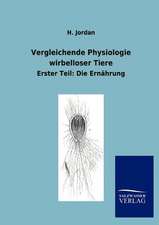Olfaction and Taste XI: Proceedings of the 11th International Symposium on Olfaction and Taste and of the 27th Japanese Symposium on Taste and Smell Joint Meeting held at Kosei-nenkin Kaikan, Sapporo, Japan, July 12–16, 1993
Editat de Kenzo Kurihara, Noriyo Suzuki, Hisashi Ogawaen Limba Engleză Paperback – 3 dec 2014
Preț: 978.40 lei
Preț vechi: 1193.17 lei
-18% Nou
Puncte Express: 1468
Preț estimativ în valută:
187.42€ • 198.34$ • 155.24£
187.42€ • 198.34$ • 155.24£
Carte tipărită la comandă
Livrare economică 22 ianuarie-05 februarie 25
Preluare comenzi: 021 569.72.76
Specificații
ISBN-13: 9784431683575
ISBN-10: 4431683577
Pagini: 896
Ilustrații: XXVII, 864 p.
Dimensiuni: 210 x 279 x 47 mm
Greutate: 1.97 kg
Ediția:1994
Editura: Springer
Colecția Springer
Locul publicării:Tokyo, Japan
ISBN-10: 4431683577
Pagini: 896
Ilustrații: XXVII, 864 p.
Dimensiuni: 210 x 279 x 47 mm
Greutate: 1.97 kg
Ediția:1994
Editura: Springer
Colecția Springer
Locul publicării:Tokyo, Japan
Public țintă
ResearchCuprins
Gustatory Cells as Paraneurons.- Receptosecretory Nature of the Gustatory Cell.- Structure/Function Correlates in Taste Buds.- Role of Merkel Cells in the Taste Organ Morphogenesis of the Frog.- Keratin Polypeptides and Taste Buds.- Frog Taste Cells After Denervation.- Parasympathetic Postganglionic Nerve Fibers in the Fungiform Papillae of the Frog.- Lamellar Bodies of Mouse Taste Buds.- Ultracytochemical Localization of Enzymes and Substances Associated with Transmission and Transduction in Mouse Taste Buds.- Electron Microscopic Demonstration of Guanylate Cyclase Activity in Rabbit Taste Bud Cells.- Ultrastructure of Canine Circumvallate Taste Buds.- Structural and Functional Features of Human Fungiform Papillae.- Investigations on the Dynamics of Chemosensory Epithelia.- Intercellular Communications via Gap Junctions in the Olfactory System.- Generation, Differentiation, and Maturation of Olfactory Receptor Neurons In Vitro.- Stem Cells of Olfactory Cells During Development.- Growth Factor Regulation of Olfactory Cell Proliferation.- Lectin Histochemical Studies of the Development of Two Olfactory Receptors in Xenopus laevis.- Effects of p-Chloroamphetamine on Recovery of Olfactory Function Following Olfactory Nerve Severance in Mice.- Neuronal and Glial Markers in Immortalized Olfactory Cell Lines.- Development of the Rat Olfactory Epithelium.- Ontogeny of the Septal Olfactory Organ of Masera in the Rat.- Immunocytochemical Study of the Vomeronasal Epithelium of the Infant Rat.- Characterization of the Mucomicrovillar Complex in the Vomeronasal Epithelium with Lectinohistochemistry and Confocal Laser Scanning Microscopy.- Gustducin and Transducin Are Present in Taste Cells.- Seven Transmembrane Receptors in Tongue Epithelia.- Cloning of G-Protein-Coupled Receptorsfrom Bovine Taste Tissue.- Strategies for Isolation of Taste Receptor Proteins.- Molecular Mechanisms of Taste Receptor Cell Signal Transduction.- Immunohistochemical Localization of G-Proteins in Mouse Taste Buds.- Kinetics of Second Messenger Formation in Taste Transduction.- Selective Suppression of Bitter Taste Responses by Lipoprotein.- Where and What Is the Target of the Sweet Taste Inhibitory Peptide, Gurmarin?.- Effects of Various Liposomes on Frog Taste Nerve Responses to Odorants and Taste Stimuli.- Molecular Modelling Approach to the Structure of Taste Receptor Sites.- Discrimination of Taste Between Polysaccharides and Common Sugars in Rats and Mice.- Gustatory Responses of the Greater Superficial Petrosal Nerve to l- and d-Amino Acids Applied on the Soft Palate in the Rat.- The Effect of Topical Treatment with a Carbonic Anhydrase Inhibitor, MK-927, on the Response of the Chorda Tympani Nerve to Carbonated Water.- l-Arginine-Regulated Conductances in Catfish Taste Cells.- Ion Channels in Gustatory Transduction of Frog Taste Cells.- Transcellular and Paracellular Pathways in Taste Buds Mediate Salt Chemoreception: The Location of Na+ Transducing Channels.- Effect of Novobiocin on Cation Channel Formation and Enhancement of Salt Taste.- Ion Channels Contributing to the Generation of Salt-Induced Response in Isolated Bullfrog Taste Cells.- Distribution of Ion Channels on the Bullfrog Taste Cell Membrane.- Effects of Anions on the Responses to Ca, Mg, and Na in Single Water Fibers of the Frog Glossopharyngeal Nerve.- Electrophysiological Properties and Chemically-Induced Responses of Mammalian Taste Bud Cells.- Patch Clamping of Single Mammalian Taste Receptor Cell.- Electrical Responses of Taste Cells in Peeled Epithelium of Mouse Tongue.- Role of Salivary Ions in Maintenance of Taste Sensitivity in the Chorda Tympani Nerve of Rats.- Mechanism of the Electric Response of Lipid Bilayers to Bitter Substances.- A Theoretical Study of the Synergetic Effects of Mixed Taste Stimuli on the Responses of Taste Cells and Nerves.- Response Properties of the Rat Lingual Trigeminal Nerve to Acidic Stimuli.- The Effect of Gustatory Nerve Transections on Sucrose Responsiveness in the Rat.- Olfactory Reception: From Signal Modulation to Human Genome Mapping.- Olfactory Receptor Family: Diversity and Spatial Patterning.- Signal Recognition and Transduction in Olfaction.- Role of Inositol Triphosphate (IP3) in Olfactory Transduction.- ?-Adrenergic Receptor Kinase, ?-Arrestin, and cGMP as Mediators of Olfactory Desensitization.- G-Proteins and Type III Adenylyl Cyclase During Rat Olfactory Epithelium Ontogeny.- Differential Expression of Vomeromodulin mRNA in the Nasal Mucosa of Rats During Ontogeny.- A Temperature Increase Abolishes Ability of Turtle Olfactory Receptors to Discriminate Odorants with Close Structures.- Enhancement of Turtle Olfactory Responses to Fatty Acids by Treatment of Olfactory Epithelium with Phosphatidylserine.- Olfactory Transduction Studied with Caged Cyclic Nucleotides.- cAMP-Gated Channels from Olfactory Neurons of the Rat: Chemical Gating, Inhibition by Ca Ions, Noise Analysis.- Transmigration of Calcium Ions in the Olfactory Receptor Cell.- Cyclic AMP-Gated Channels and Ca-Activated Cl? Channels in Vertebrate Olfactory Receptor Cells.- Patch-Clamp Measurements on Mammalian Olfactory Receptor Neurons.- IP3-Activated Ion Channel Activities in Olfactory Receptor Neurons from Different Vertebrate Species.- Mediation of Opposing Transduction Cascades in Lobster Olfactory Receptor Neurons by cAMP and IP3.- TheSignificant Contribution of the cAMP-Independent Pathway to Turtle Olfactory Transduction.- Functional Properties of Frog Vomeronasal Receptor Cells.- Experimental Study of Olfactory Desensitization in Electro-Olfactogram.- Survey of Ligand-Gated Conductance in Olfactory Receptor Cilia.- IP3-Gated Current in Isolated Rat Olfactory Neurons.- Ligand and Ion Specificity of IP3-Gated Channels in Lobster Olfactory Receptor Cells.- Origin of the Chloride Component of Olfactory Receptor Current.- Study of Olfactory Transduction by Analysis of Dynamics of Odor-Induced [Ca2+]i Increases in Receptor Neurons.- Optical Recordings of Calcium Responses in Neighboring Olfactory Receptors Suggest that the Distribution of Subtypes of Receptors is Heterogeneous.- Olfactory Receptor Responses to Chemical Stimulation.- Whole Tissue Voltage Clamp of Frog Olfactory Mucosa Using a Modified Ussing Chamber.- Mucosal Activity Patterns and Odorant Quality Perception.- Olfactory Response to an Inorganic Metal Compound.- Ligand Recognition Mechanism of Bacterial Chemoreceptors Revealed by Site-Specific Sulfhydryl Modification.- Genetics of Taste in Drosophila.- Genetic Dissection of Taste Transduction Mechanisms in Drosophila.- Maxillary Palp: A Second Olfactory Organ of Drosophila.- Genetics of the Gurmarin-Sensitive Sweet Receptor in Mice.- Molecular-Genetic Studies of Mouse Proline-Rich Protein Genes and Bitter Taste.- Odortypes Determined by the Major Histocompatibility Complex in Mice.- Isolation of Variants for Fructose or Glucose Taste from a Natural Population of Hawaiian Drosophila adiastola.- Molecular Population Genetics of Olfactory Systems in Drosophila melanogaster Complex: Cloning of Putative Olfactory Receptor Genes.- Chemical Characterization of Odortypes in Mice.- Induction of Olfactory Receptor Sensitivity in Mice.- Structures and Functions of Antisweetness Substances, Sweetness-Inducing Substances, and Sweet Proteins.- Further Studies of l-Ornithyltaurine HC1, a New Salty Peptide.- Behavioral Evidence for the Primacy of the Chorda Tympani Nerve in Sodium Chloride Taste.- Effect of Gurmarin on Glucoreceptor-Originated Autonomic Reflex.- Chirality in Tea Aroma Compounds.- Important Odorants in Roasted White and Black Sesame Seeds.- Flavor Development in the Beans of Vanilla planifolia.- Odor Thresholds of Cyclic Esters.- Synthesis of “Delicious Peptide (Lys-Gly-Asp-Glu-Glu-Ser-Leu-Ala)” Analogs; Investigation of Their Tastes.- The Tastes of O-Aminoacyl Sugars.- Role of Arginine and Lysine Residues in Sweetness Expression of Thaumatin.- Purification and Structural Characterization of Homologues of the Heat-Stable Sweet Protein, Mabinlin.- Sensory Identification of Effective Components for Masking Bitterness of Arginine in Synthetic Extract of Scallop.- Comparison of Extracts from Species of the Mackerel Family.- Odor of (R)-Ethyl Citronellyl Oxalate and Its Conformations.- Statistical Analysis of Flavor Components and Sensory Data for Tea.- Behavior Manifestations Indicative of Hedonics and Intensity in Chemosensory Experience.- Semantics of Astringency.- Central and Peripheral Aspects of Spatial Summation and Mixture Suppression in Taste.- Temporal Patterns of Perceived Tastes Differ from Liquid Flow at the Tongue.- Structure and Dimension of the Taste Sensory Space: Central and Peripheral Data.- Increased Taste Discrimination Ability by Flowing Stimuli over the Tongue.- The Effects of Tasting Foods on the Flow Rate of Whole Saliva.- The Effect of Taste Adaptation on Salivary Flow Rate in Children.- Relation Between Human Taste and IonConcentration in Saliva.- Approach to Tastiness Evaluation: Electrophysiological Evaluation of Effect of Mood State on Perception of Taste.- Free-Choice Profiling vs Conventional Descriptive Analysis in Characterizing the Sensory Properties of Acids on an Equi-Sour Basis.- Phenylthiocarbamide (PTC) Taste Test in Various Ethnic Groups in China.- Cross-Cultural Studies of Japanese and Australian Taste Preferences.- A Basic Study of the Initial Development of Food Preference: Feeding Experiments with Diet Containing Capsaicin.- Why Do You Like Bitter Taste?.- Production of Low Sodium Chloride Soy Sauce.- Cognitive and Physiological Factors That Affect the Perception of Odor Mixtures.- Nasal Trigeminal Chemoreceptors May Have Affector and Effector Functions.- Effects of Fragrance of Whiskey: An Electrophysiological Study.- A Study of Fragrance Preferences.- A Study of Perfume Preferences.- Factor Structure in the Imagery of Fragrance: Study of Differences Between the Sexes.- Factor Structure in the Imagery of Fragrance: Study of Generational Differences.- Effects of Fragrances on Work Efficiency.- Evaluation of the Effect of Plant-Derived Odors Based on Fatigue Investigation.- A Case Study of Olfactory Fatigue to an Odorant (Tertiary-Butyl-Mercaptan) in Town Gas in the Matsumoto City Area of Japan.- Changes in Detection Thresholds of Androstenol and Pentalide During the Menstrual Cycle.- A Study of Aromatherapy for Pregnant Women.- Looking-Time in the Presence of Congruent and Incongruent Odors.- Cross-Adaptation Effects Among Five Odorants of the T and T Olfactometer.- T&T Olfactometer for Standardized Olfactory Test and Its Uses.- Offensive Odor Control Measures in Japan.- Typical Olfactory Properties of the Aromas of Green, Oolong, and Black Teas.- Excitatory and Sedative Effects of Body Odor-Related Chemicals on Contingent Negative Variation.- The Effect of Video Images on Psychophysiological Changes Concomitant with Exposure to Odors.- Effects of Fluctuating Odor on Odor Intensity and Annoyance.- Perception of Monosodium Glutamate in Water and Food by Young and Elderly Subjects.- Humans and Appreciation of the Umami Taste.- Enhancing Effect of Nucleotides on Sweetness of Heated Prawn Muscle.- Enhancing Effects of Salts on Canine Taste Responses to Amino Acids and Umami Substances.- Umami Taste in the Chimpanzee (Pan troglodytes) and Rhesus Monkey (Macaca mulatta).- Umami Taste in the Forebrain of the Alert Macaque.- Central Function in Preference for Amino Acids.- Effect of Umami Taste of Monosodium Glutamate Paired with a Meal on Early Humoral and Metabolic Changes in the Rat.- The Molecular Biology of Glutamate Receptors in Rat Taste Buds.- Monosodium Glutamate Binding to Bovine Epithelial Cells Is Affected by the Ionic Composition of the Medium.- Role of Yeast in the Formation of Inosinic Acid as the Taste Compound in Leavened Bread.- Neural Coding of Taste in Macaque Monkeys.- Role of Calcitonin-Gene-Related Peptide (CGRP) as a Chemical Marker for the Thalamocortical Visceral Sensory System.- Functional Organization of the Orally Responsive NST.- Information Processing in the Parabrachial Nucleus of the Pons.- Taste Information Processing in the Insular Cortex of Rats.- Optical Recording of Neural Signals in Rat Geniculate Ganglion.- Fos Protein Expression in Taste Neurons Following Electrical Stimulation of Afferent Nerves.- Coding of Binary Heterogeneous Taste Mixtures in the Hamster Parabrachial Nucleus.- Location of a Taste-Related Region in the Thalamic Reticular Nucleus in Rats.- Convergence of Afferent Inputs from Tongue,Pharynx, and Larynx in the Insular Cortex of the Rat.- NMDA and Non-NMDA Receptors Mediate Taste Afferent Inputs to Cortical Taste Neurons in Rats.- Effects of Substance P and Calcitonin Gene-Related Peptides on Cortical Taste Neurons in Rats.- Gustatory Responses of Cortical Neurons in the Awake Monkey.- Artificial Neural Networks Analyze Response Patterns of Cortical Taste Neurons in the Rat.- Amygdalar Neuronal Responses to Taste and Other Sensory Stimuli in Awake Rats.- Roles of Taste in the Frog.- Comparison of Hypoglossal and Reticular Formation Neural Activity During Gustatory-Evoked Ingestion and Rejection.- Oropharyngeal/Laryngeal Mechanisms for Vasopressin Release.- Synaptic Circuitry of Olfactory Bulb Glomeruli.- Molecular Receptive Range Properties of Mitral/Tufted Cells in the Mammalian Main Olfactory Bulb.- Properties of Salamander Olfactory Bulb Circuits.- Central Coding of Odor Information in the Brain of the Slug, Limax marginatus.- Differential Regulation of Neurotrophic Factor Expression in the Olfactory Bulb.- Neural Responses of Olfactory Bulb and Pyriform Cortex to Odors of Essential Oils and Terpenes in Rats.- Suppressive Interactions During Olfactory Bulb Circuit Response to Odor: Computer Simulation.- Analysis of Dopamine and Its Effects in the Salamander Olfactory Bulb.- Modulation of Dendrodendritic Interactions in the Rat Olfactory Bulb by Locus Coeruleus Stimulation.- Determinants of Odor Mixture Perception in Squirrel Monkeys, Saimiri sciureus.- Oxidative Energy Metabolism Supporting Evoked Potentials in Olfactory Cortex Slice.- Localization of Nitric Oxide Synthase in Mouse Olfactory and Vomeronasal System: A Histochemical, Immunological, and In Situ Hybridization Study.- Removal of the Vomeronasal Organ: Long-Term Studies of Male and Female Prairie Voles.- Odor-Induced Puberty and Expression of c-fos in the Olfactory Bulb of Female Mice (Mus musculus).- c-fos Expression in Vomeronasal Pathways During Mating Behavior in Male Hamsters.- Social Environment Affects Synapses in the Accessory Olfactory Bulb of Adult Hamster: Quantitative Electron Microscopic Study.- The Action of Paraventricular Oxytocinergic Neurons on Mitral and Granule Cells of the Rat Olfactory Bulb.- Effective Induction of Pregnancy Block by Electrical Stimulation of the Mouse Accessory Olfactory Bulb Coincident with Prolactin Surges.- The Effect of Microinfusions of Drugs into the Accessory Olfactory Bulb on the Olfactory Block to Pregnancy.- Convergent Olfactory, Taste/Visceral and Other Sensory Inputs to the Monkey Orbital Cortex.- Emotional Behavior in Cats Induced Olfactorily by matatabi (Actinidia polygama).- Memory for Taste Aversion: Molecular and Cellular Mechanisms.- Neural Mechanisms of Conditioned Taste Aversion Revealed by Functional Ablation Procedures.- A Neural Model for Taste Aversion Learning.- Nerve Growth Factor Accelerates Recovery of Conditioned Taste Aversion Learning by Insular Cortical Grafts.- A Comparative Study of Neocortical Olfactory Neuron Responses in Very Young Pups and Adult Dogs.- The Noradrenergic Basis of Early Olfactory Plasticity.- Odor Learning and Odor Memory in the Rat.- Olfactory Recognition Memory.- Modifiability of NaCl Taste Aversion Generalization Functions.- Effects of Lesions of the Medial and Lateral Parabrachial Nuclei on Acquisition and Retention of Conditioned Taste Aversion.- Parabrachial Lesions Disrupt Conditioned Taste and Odor Aversions, but not Learned Capsaicin Aversion or Flavor Preference.- Olfactory Recognition of Five Species by Urine Odor in Tufted Capuchin (Cebus apella).- Changes in Urinary Marking Behavior of Mice with Development.- Functional Correlation Between Feeding-Related Neurons and Chemical Senses.- Taste Responses During Ingestion.- Role of Taste in Dietary Selection.- Changes of Taste Preference with Nutritional Disorder and Neural Plasticity in the Brain.- Chemosensory Factors Affecting Acceptance of Food During Human Growth.- Sensory Preferences for Sweet High-Fat Foods: Evidence for Opiate Involvement.- Taste Preference in Adrenalectomized Rats.- Appetite and Taste Preferences in Growing Rats in Various States of Protein Nutrition.- Developmental Changes in Taste Response to and Preferential Ingestion of Various Sugars in Rats.- Gustatory Neural Inputs for l-Lysine in Mice.- Effects of Angiotensin II and ANP on Taste Nerve Activity.- Dietary NaCl Deficiency Affects Gustatory Neurons in the Nucleus of the Solitary Tract of Behaving Rats.- Taste Functions and Na+-Appetite After Excitotoxic Lesions of the Parabrachial Nuclei in Rats.- Responses of Lateral Hypothalamic Neurons in Lysine-Deficient Rats.- Lateral Hypothalamic Neuron Response to Application of Amino Acids in Different Nutritive Conditions.- Gustatory and Olfactory Responses of Chemosensitive Pallidal Neurons.- Effects of IV Angiotensin II on Cortical Neurons During a Salt-Water Discrimination GO/NOGO-Task in Monkeys.- Influences of Aging on Taste Bud Distribution and Taste Perception in Humans and Rodents.- Influence of Aging on Taste Threshold.- Human Sensory Function for Taste Is Robust Across the Adult Life-Span.- Early Development of the Glossopharyngeal Nerve in Humans.- Influence of Aging on Taste Threshold, Examined by Whole Mouth Method.- Changes with Age in the Electrogustometric Threshold.- Taste Loss and Taste Phantoms: A Role of Inhibition in the Taste System.- Drug-Induced Taste Disorders.- Clinical Assessment of Taste Disorders and Evaluation of Zinc Therapy.- Concepts of Therapy in Taste and Smell Dysfunction: Repair of Sensory Receptor Function as Primary Treatment.- Is the Whole Mouth Method an Appropriate Index of Taste Disorders?.- Secretory Function of the Salivary Glands in Patients with Taste Disorders: Correlation Between Zinc Deficiency and Secretory Function of Salivary Glands.- Clinical Experience of Zinc Picolinate in the Treatment of Patients with Taste Disorders.- Double-Blind Study of the Therapeutic Efficacy of Zinc Picolinate in Taste Disorder: Preliminary Report.- Xanthurenic Acid and Zinc.- Clinical Aspects of Phantogeusia.- Effect of Muscle Relaxation on Chronic Pain Patients Who Have Taste Dysfunction.- Reinnervation After Severance of the Chorda Tympani During Middle Ear Surgery.- Analysis of Neurogenesis and Aging of Olfactory Epithelium in the Rat.- Pathology of Olfactory Mucosa in Patients with Age-Related Olfactory Disturbance and Dementia.- Rise and Fall of Olfactory Competence Through Life.- Olfactory Dysfunction in the Elderly and in Alzheimer’s Disease.- Differential Expression of Cell-Specific Molecules in Olfactory Receptor Neurons of Humans of Different Ages.- Olfactory Acuity of American and Japanese Subjects Tested with a T and T Olfactometer.- Clinical Evaluation of Disorders of the Sense of Smell.- Psychophysical Assessment of Chemosensory Disorders in Clinical Populations.- Clinical Evaluation of Olfactory Dysfunction at Kagoshima University.- Diagnosis and Treatment of Distorted Olfactory Perception.- Endoscopic Observations for the Diagnosis of Olfactory Disturbance.- Olfactory Event-Related Potentials in the Diagnosis of Smell Disorders.- Ultrastructural Analysis ofOlfactory Mucosa in Patients with Congenital Anosmia.- Morphological Study of Olfactory Dysfunction in Patients with Sinusitis.- Clinical Features of Olfactory Disorder Following Common Cold.- Monorhinal Smell Identification Ability Before and After Temporal Lobectomy.- Anosmic Patients Can Separate Trigeminal and Nontrigeminal Stimulants.- Olfactory Function in Patients with Hypogonadotropic Hypogonadism: An All-or-One Phenomenon?.- Gustatory-Evoked Potentials in Man: A Long History and Final Results.- Brain Event-Related Potentials to Primary Tastes.- EEG Topography of Affective Response to Odors.- Olfaction and the EEG: Old Paradigms and New Approaches.- Do the Brain Hemispheres React Differently to Odors? A Study Using Pleasant and Unpleasant Odors.- Chemosensory Event-Related Potentials: Effects of Dichotomous Stimulation with Eugenol and Dipyridyl.- Olfactory Event-Related Potentials and Olfactory Neuromagnetic Fields in Humans.- Electroencephalography and Its Fractal Analysis During Olfactory Stimuli.- Evoked Potentials Produced by Electric Stimulation on the Tongue.- Topographic Analysis of Hemispheric Differences in Chemosensory Event-Related Potentials.- Effects of Odor Pleasantness on Facial EMG.- Different Feeling Profiles in Response to Odor: Relationship to Hemispheric Reactivity.- Influences of Blink Response and Eye Movement on Olfactory Evoked Potentials.- Olfactory Evoked Potentials Using Blast Method for Odor Stimulation.- Wavelet Analysis of Event-Related Potentials (ERPs) Under Ambient Odors.- The Taste Sensor.- Intelligent ChemSADs for Artificial Odor-Sensing of Coffees and Lager Beers.- Odor-Sensing System Using QCM Gas Sensors and an Artificial Neural Network.- Chemical Vapor Sensor Using a Lipid-Coated SAW Resonator Oscillator.- A Lipid-CoatedQuartz Crystal Microbalance as an Olfaction Sensor.- Odor Evaluation of Foods Using Conducting Polymer Arrays and Neural Net Pattern Recognition.- Discrimination of Food Aromas by Applying Chemometric Pattern Recognition to Gas Sensor Array.- Fish Freshness Detection by Semiconductor Gas Sensors.- Taste Recognition Using Multichannel Fiber-Optic Sensors with Potential-Sensitive Dye Coatings.- Halide Anion Sensor.- Pattern Analysis of Odors by Multiple Metal Oxide Semiconductors: Odor Analyzer with Human Sense of Smell.- Novel Intelligent Gas Sensor Based on Informational Source of Nonlinear Response.- Neural Network Processing of Responses to Odorants by a Biological Nose and a Sensor Array.- Measurement of Halitosis with a Zinc Oxide Thin Film Semiconductor Sensor.- Development of Odor-Sensing System Using an Auto-Sampling Stage and Identification of Natural Essential Oils.- A Sensor for the Detection of p-Cresol in Air.- Revolutionary Device to Identify Smell—The Development of an Olfactory Receptor-Coated Biosensor.- Enhancing Effects of Betaine on the Taste Receptor Responses to Amino Acids in the Puffer Fugu pardalis.- Sorting Food from Mud: Vagal Gustatory System of Goldfish (Carassius auratus).- Amino Acids and Other Stimuli for Catfish Feeding, Escape, and Aversion Behaviors.- Specific Amino Acid Binding to Membrane Fractions of Carp Taste Epithelium.- L-Lactate Sensitivity of Fish Taste Receptors.- NH3 Blocks Gustatory Responses of Frogs and Eels.- Responses to Binary Mixtures of Amino Acids in the Facial Taste System of the Channel Catfish.- Gustatory Responses to Amino Acids in Salmonids: Phylogenetic Considerations.- Development of the Facial Lobe in the Sea Catfish, Plotosus lineatus.- Determination of Palatability in Goldfish.- Ultrastructure of TasteBuds in the Spotted Dogfish Scyliorhinus caniculus (Selachii).- Cell Proliferation and Differentiation in the Olfactory Organ of the Embryonic and Larval Zebrafish, Brachydanio rerio.- Specific Regeneration of Peripheral and Central Olfactory Pathways in Goldfish.- Information Processing in the Olfactory Bulb of Goldfish: Interaction of Mitral and Granular Cells.- Olfactory Imprinting and Homing Mechanisms in Salmonids.- Olfactory Responses of Rainbow Trout were Unchanged When Fish was Adapted from Fresh Water to Seawater.- Spatial Coding of Odour Information in Salmonids.- Involvement of Gonadotropin-Releasing Hormone in Olfactory Function in Salmonids.- Chemical Alarm Signals in Adult Lake Whitefish.- Avoidance of Pesticides by Olfaction in Carp.- Chemoreception in Paramecium.- Response to Reduced Glutathione of Hydra Cultured in Different Places: Involvement of Protease Activities in Modulation of the Behavioral Response.- Mechanisms of Detection and Discrimination of Mixtures in the Olfactory System of Spiny Lobsters.- Turbulent Odor Dispersal, Receptor Cell Filters, and Chemotactic Behavior.- Taste Discrimination in Salamanders.- Comparison of Tuning Properties of Five Chemoreceptor Organs of the American Lobster: Spectral Filters.- Tuning Properties of Chemoreceptor Cells of the American Lobster: Temporal Filters.- Integration of Olfactory Input by Lobster Olfactory Receptor Neurons.- Study of Feeding Sensitivity in the Prawn, Penaeus chinensis (O’sbeck).- Growth Enhancement in a Freshwater Prawn Through the Use of a Chemoattractant.- Sensitivity of Xenopus Chemoreceptors to Astringent Compounds.- Functional Organization of Insect Taste Hairs.- Multiple Receptor Sites of Insect Taste Cells.- Immunocytochemistry of Odorant-Binding Proteins.- Transduction IonChannels in Insect Taste Cells.- Elementary Receptor Potentials of Insect Olfactory Cells.- Two Types of Sugar-Binding Protein in the Labellum of the Fly: Putative Taste Receptor Molecules for Sweetness.- Main Soluble Protein in the Taste Organ of the Fly: Localization and cDNA Sequence.- Receptor Current Fluctuation Analysis on the Taste Receptor of the Fleshfly.- The Effects of Cyclic Nucleotides on the Labellar Salt Receptor and Its Adaptation in the Fleshfly.- Taste Cells Isolated from Adult Labella of the Blowfly.- Oviposition Behavior of Insects Influenced by Chemoreceptors.- Olfactory Mechanisms Underlying Sex-Pheromonal Information Processing in Moths.- Olfactory Processing Pathways of the Insect Brain—Lateral Accessory Lobe System in the Protocerebrum Produces Olfactory Flip-Flopping Signals in Bombyx mori.- Pheromone-Modulated Flight Behavior of the Sphinx Moth, Manduca sexta.- Behavioral Reaction Times of Male Moths to Pheromone Filaments and Visual Stimuli: Determinants of Flight Track Shape and Direction.- Correlation of Chemoreception with Choice of Oviposition Site in Blowflies, Phormia regina.- Food Distribution Dependence in Fractal Feeding Behavior of Drosophila.- Elevation of Locomotor Activity After Sucrose Intake in the Blowfly, Phormia regina M.- Central Projection of the Antennal Cold Receptor Axons of the Cockroach.- Portable Devices for Single Sensillum (SSR) and Electroantennogram (EAG) Recording from Insect Antennae in the Field.- Sensitivity and Responsiveness of Neurons Associated with Male-Specific Trichoid Sensilla in the Beet Armyworm, Spodoptera exigua, to Volatile Emissions of Sympatric Spodoptera spp. and Plant Odors.- Sex Pheromone Perception by Males of Periplaneta and Blatta Species.- Motor Patterns Underlying Pheromone-ModulatedFlight in Male Moths, Manduca sexta.- Morphology and Physiology of Pheromone-Triggered Flip-Flopping Descending Interneurons of the Male Silkworm Moth, Bombyx mori.- List of Contributors.- Key Word Index.












